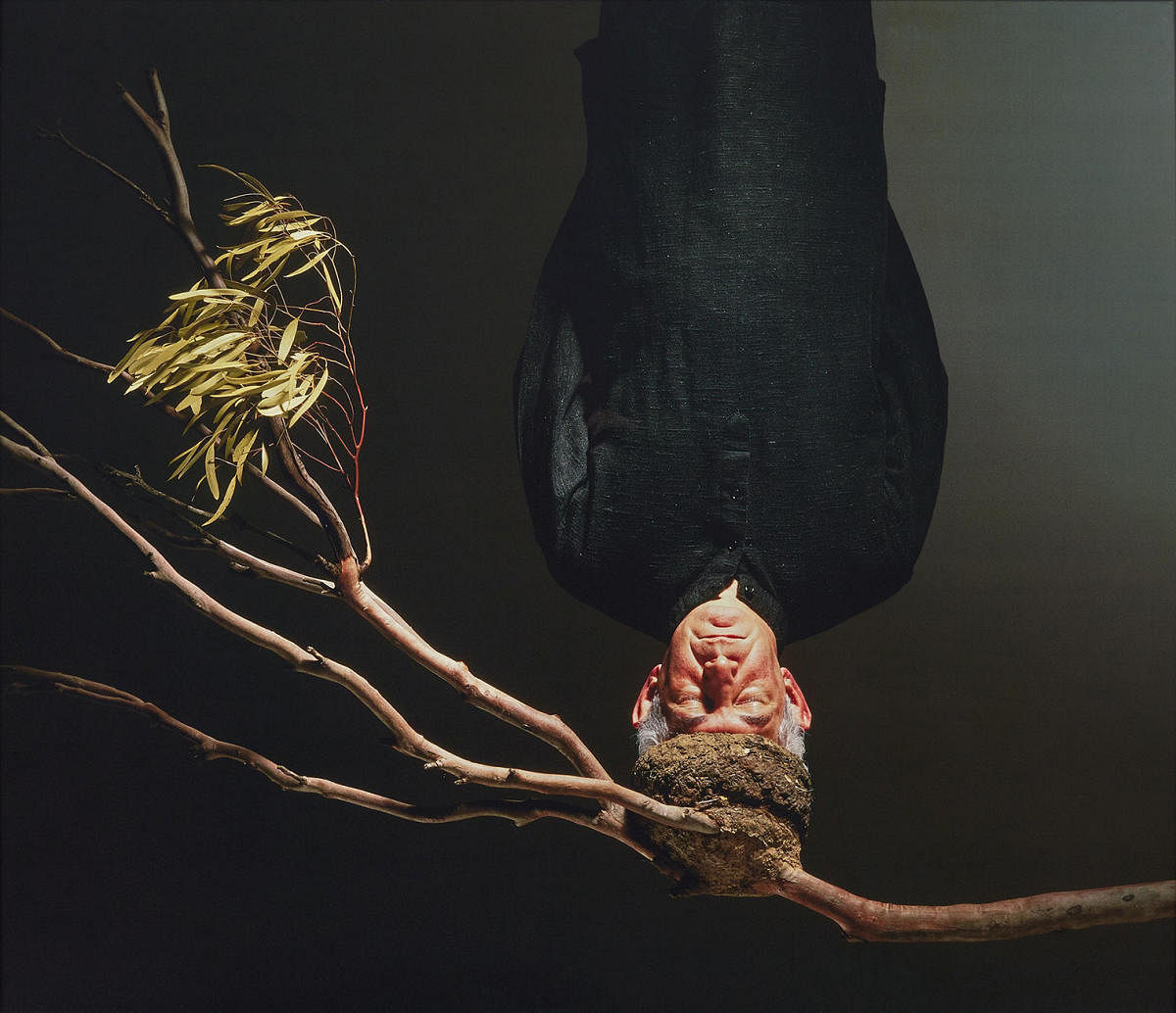

Iranian-Australian contemporary artist Hossein Valamanesh passed away in Adelaide on 15 January 2022; he was 72. The well-known painter, sculptor, and installation artist, whose works were touched with poetry and gentle humanity, was born in the east of Iran in 1949. Three years after graduating from the Tehran School of Art, he emigrated to Perth, Western Australia in 1973. In his adopted country, he found a deep and inspired connection with Aboriginal communities and their colourful heritage which had many parallels with his own Persian culture.
Valamanesh’s first Australian exhibition was held in 1977. For the next 40 years, he worked prolifically with a wide variety of mediums and materials. His multi-dimensional artworks probed themes such as place, identity, love, nature, and spirituality. They explored aspects of memory, translocation, and the ephemerality of life. Thanks to their refined aesthetics, understated structure, and lyrical imagery, they attracted the attention of both the common viewer and the connoisseur.
“The art of Hossein Valamanesh is remarkably universal in its resonance and exploration of the human condition,” observed Brisbane-based art writer Clare O’Callaghan. “At the same time, his work engages with the specificities and complexities of being an Iranian migrant in an Australian context. The artist collapses the opposition between art and life through the aesthetic languages of sentimentality, mysticism, and poetry… His approach to art entails a richness and complexity that draws on spirituality and embodies a metaphysical curiosity…There is a sense in which the artist’s work cannot be neatly categorised and operates outside the confines of the art historical canon.”
Personal experience
In his work, Valamanesh characteristically employed natural elements such as twigs, seeds, sand, leaves, stones, wood, and earth. He also gave new expression and meaning to mundane objects and found materials drawn from domestic life like ladders, chairs, candles, maps, bowls, shoes, shirts, and the burka. “My expressions come from very personal experiences of daily life,” he would explain. “The physical world like nature, walking, collecting stuff inspires my work. I reflect on what is around me and make it into something tangible. And then people react to it. And then I take that back. It is like having a conversation with the world around you but not taking it too seriously.”
It was not just the medium and material but the unique structure and arrangement that made his work striking. “You will not see anything new in my work, except the way I have made it. The shirt is not new, the chair is not new, and there is no new imagery except what you are already familiar with. And that’s the way I use these images to enter my work.”
Critics were amazed how in Valamanesh’s art those modest everyday materials acquired new meaning; how they constantly conveyed the sense of ephemerality and impermanence of all things in life and living; and how they explored essential connection to place, memory, and the nature of being. “My art is about not separating elements such as aesthetics, content, and form from each other. A door is opened and a glimpse of reality is sensed and one realises its ephemeral nature.”
Viewers and reviewers have observed that Valamanesh’s work showed an obvious influence of Sufi mysticism. An avowed atheist all his life, the artist would admit to an abiding interest in poetry, especially the texts of 13th-century Persian mystic poet Rumi, which resonated in many of his works.
“Over the years from like the sixties onwards, I have been interested in the poetry of Rumi. I find poetry more inspiring as a work of art than a kind of guide for a lifestyle or a kind of philosophy of life. I cannot call myself a Sufi or a follower of that teaching.”
Immersive milieu
Valamanesh’s enduring interest in theatre impacted many of his works in the way they were presented, often under dramatic lighting, invoking the moods and contours of a theatrical performance. He was equally interested in drawing and positioning the viewer within immersive spaces and environments that he methodically created.
Valamanesh’s works were exhibited extensively nationally and internationally. Indian audiences had a chance to experience one of his fascinating site-specific installations during the inaugural edition of the Kochi-Muziris Biennale in 2012. Set in the Pepper House, Fort Kochi, and titled ‘Leave Your Shoes Here’, it presented a dimly-lit meditation room with several Persian carpets spread across the floor, and a string of cylindrical columns of light suspended from the ceiling. As the visitor (having been asked to remove the shoes before entering the room) moved around in the space, he experienced a mysterious sense of peace, quiet, and silence while surrounded by both light and darkness in equal measure. The mesmerising installation brought together elements of art, theatre, architecture, and spiritualism in a unique way.
Valamanesh, whose works were always meticulously created and carefully installed, was known to be gentle and generous in words and actions. He frequently collaborated with his wife Angela on public artworks. A leading Australian ceramist and watercolourist, Angela too draws inspiration from nature and its many manifestations for her work. In later years, Valamanesh also worked with his son, Nassiem, a Melbourne-based filmmaker, and produced several outstanding video projections and installations.